Abstract
The objective of this study was to determine the feasibility of using airborne T3 coliphage as a viral tracer in microbial aerosols. Although T3 coliphage was relatively stable when stored either at temperatures ranging from 21 to 37 C or in the frozen state at -20 C, there was a 2-log loss in infectivity when stored for 72 days at 4 C. Either agitation of stored coliphage suspensions held at 31 C or wide fluctuations in storage temperature produced an increased loss of infectivity. In the airborne state, freshly prepared coliphage and stored coliphage behaved similarly, with survival diminishing as the relative humidity (RH) was lowered. The greatest loss occurred during the first five min following aerosolization. The results showed that only under certain conditions of temperature and relative humidity can T3 coliphage be used as a satisfactory aerosol tracer.
Full text
PDF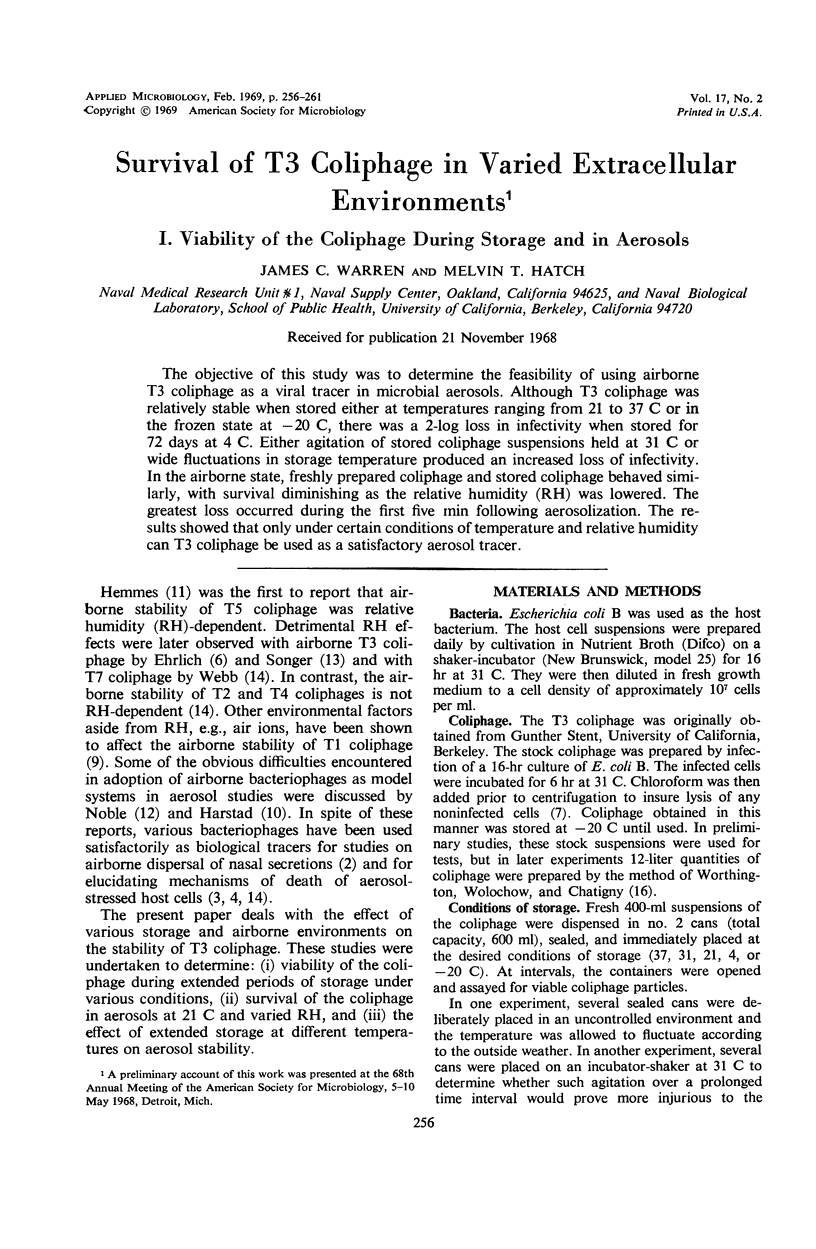
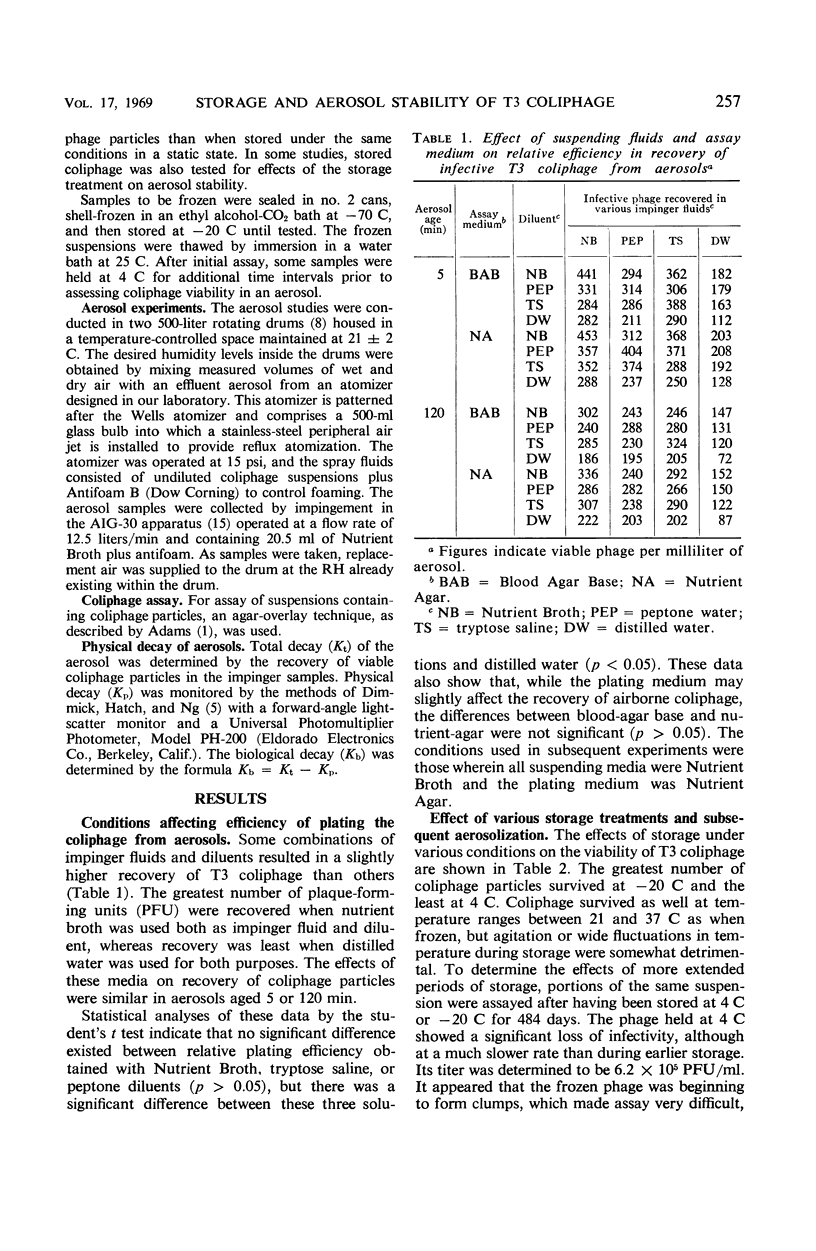
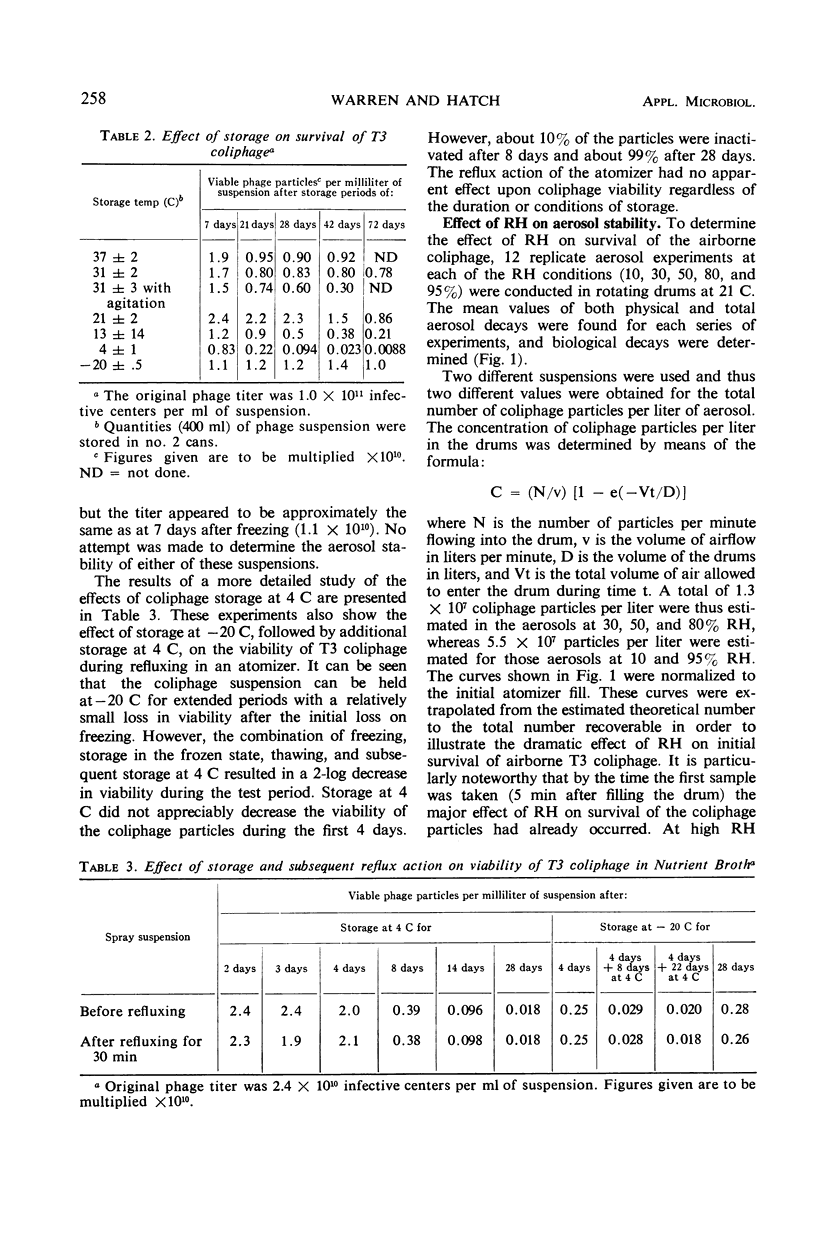
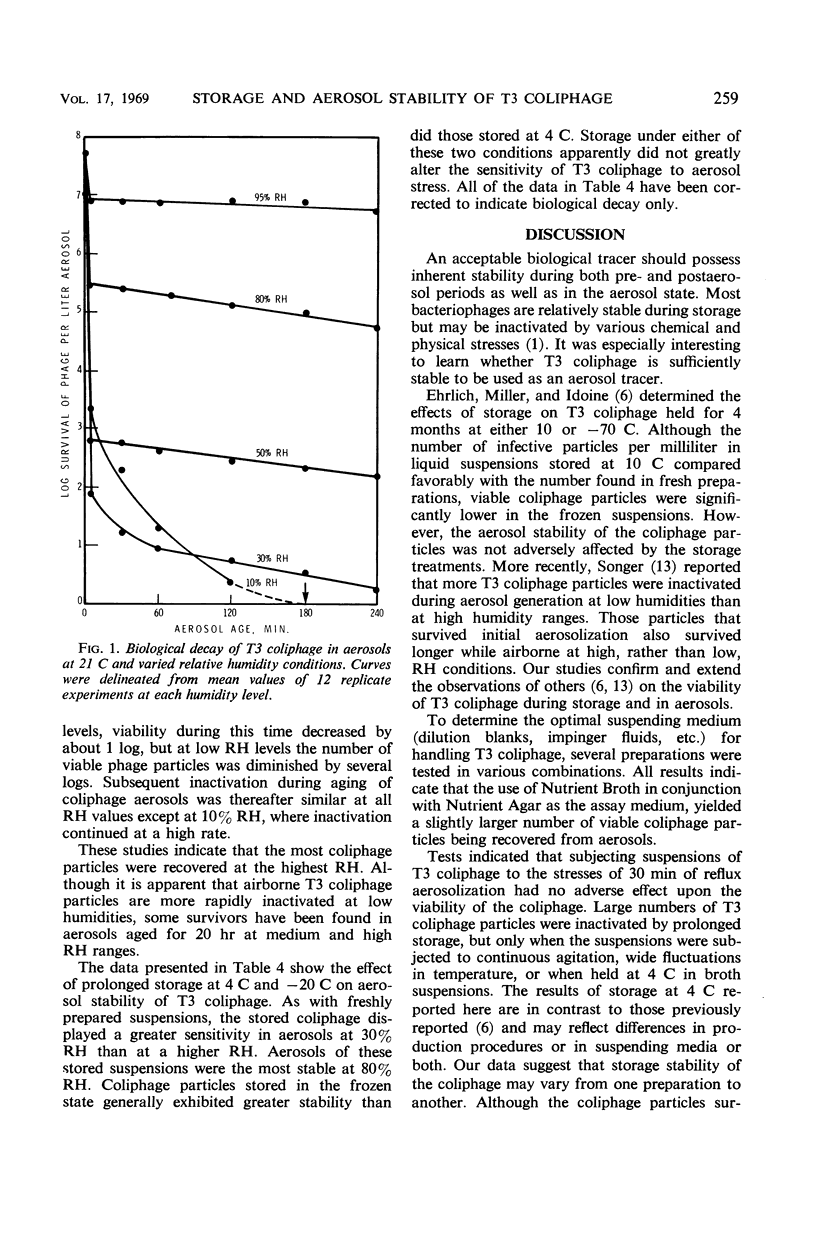
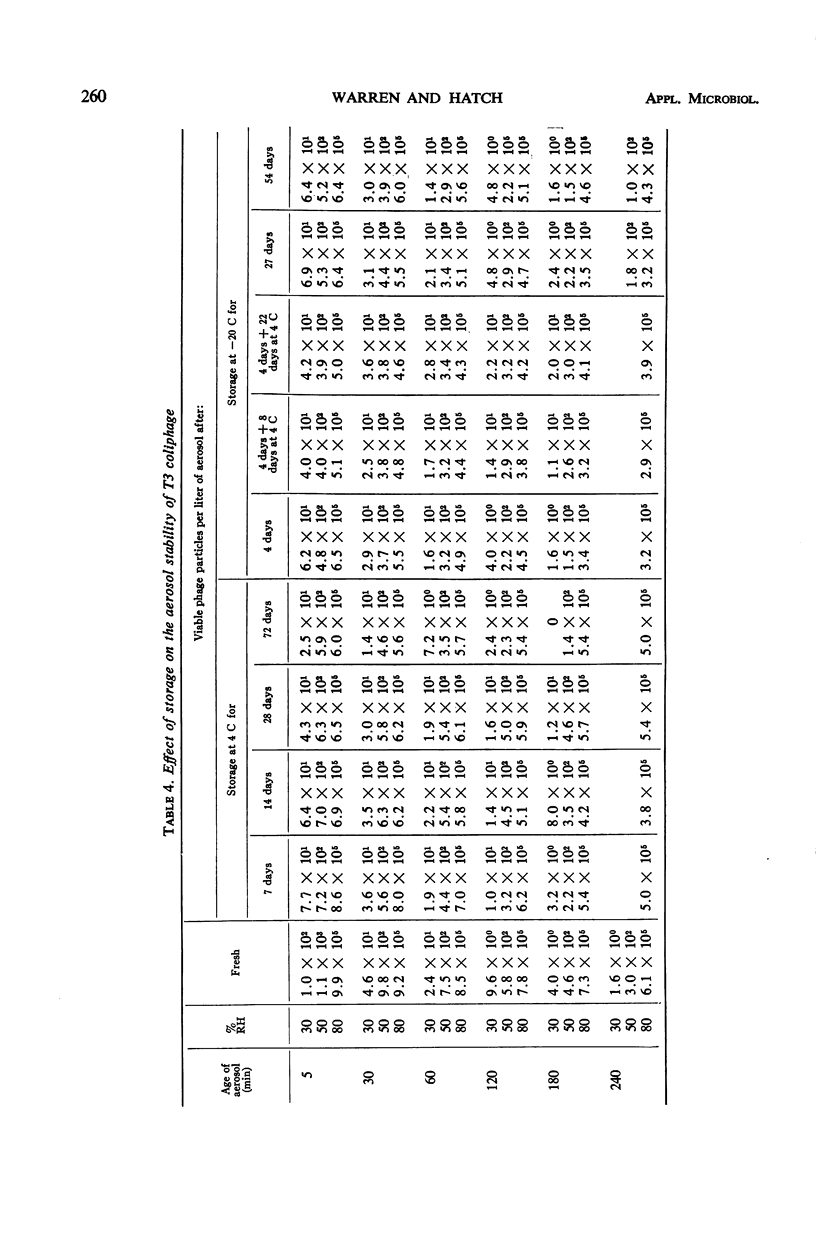
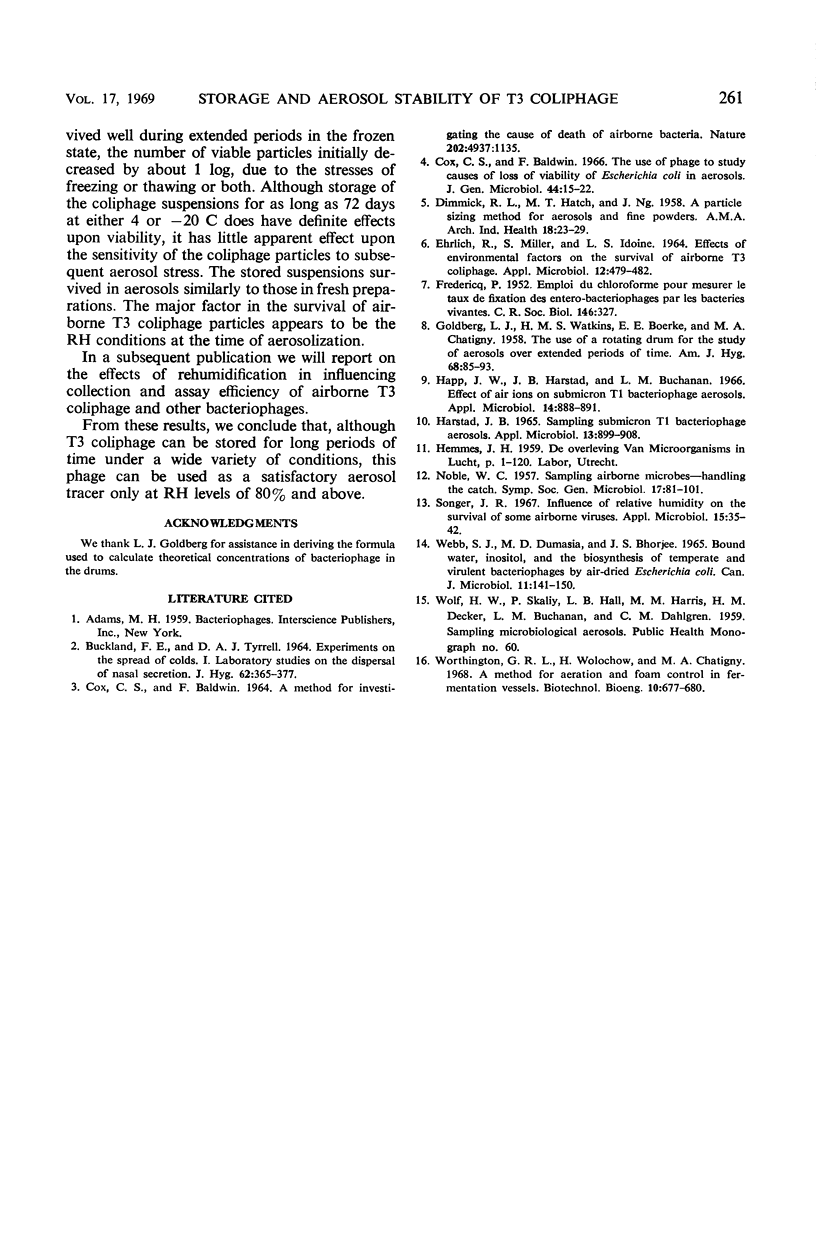
Selected References
These references are in PubMed. This may not be the complete list of references from this article.
- BUCKLAND F. E., TYRRELL D. A. EXPERIMENTS ON THE SPREAD OF COLDS. 1. LABORATORY STUDIES ON THE DISPERSAL OF NASAL SECRETION. J Hyg (Lond) 1964 Sep;62:365–377. doi: 10.1017/s0022172400040080. [DOI] [PMC free article] [PubMed] [Google Scholar]
- COX C. S., BALDWIN F. A METHOD FOR INVESTIGATING THE CAUSE OF DEATH OF AIRBORNE BACTERIA. Nature. 1964 Jun 13;202:1135–1135. doi: 10.1038/2021135a0. [DOI] [PubMed] [Google Scholar]
- Cox C. S., Baldwin F. The use of phage to study causes of loss of viability of Escherichia coli in aerosols. J Gen Microbiol. 1966 Jul;44(1):15–22. doi: 10.1099/00221287-44-1-15. [DOI] [PubMed] [Google Scholar]
- DIMMICK R. L., HATCH M. T., NG J. A particle-sizing method for aerosols and fine powders. AMA Arch Ind Health. 1958 Jul;18(1):23–29. [PubMed] [Google Scholar]
- EHRLICH R., MILLER S., IDOINE L. S. EFFECTS OF ENVIRONMENTAL FACTORS ON THE SURVIVAL OF AIRBORNE T-3 COLIPHAGE. Appl Microbiol. 1964 Nov;12:479–482. doi: 10.1128/am.12.6.479-482.1964. [DOI] [PMC free article] [PubMed] [Google Scholar]
- FREDERICQ P. Emploi du chloroforme pour mesurer le taux de fixation des entérobactériophages par les bactéries vivantes. C R Seances Soc Biol Fil. 1952 Feb;146(3-4):327–329. [PubMed] [Google Scholar]
- GOLDBERG L. J., WATKINS H. M., BOERKE E. E., CHATIGNY M. A. The use of a rotating drum for the study of aerosols over extended periods of time. Am J Hyg. 1958 Jul;68(1):85–93. doi: 10.1093/oxfordjournals.aje.a119954. [DOI] [PubMed] [Google Scholar]
- Happ J. W., Harstad J. B., Buchanan L. M. Effect of air ions on submicron t1 bacteriophage aerosols. Appl Microbiol. 1966 Nov;14(6):888–891. doi: 10.1128/am.14.6.888-891.1966. [DOI] [PMC free article] [PubMed] [Google Scholar]
- Harstad J. B. Sampling submicron T1 bacteriophage aerosols. Appl Microbiol. 1965 Nov;13(6):899–908. doi: 10.1128/am.13.6.899-908.1965. [DOI] [PMC free article] [PubMed] [Google Scholar]
- Songer J. R. Influence of relative humidity on the survival of some airborne viruses. Appl Microbiol. 1967 Jan;15(1):35–42. doi: 10.1128/am.15.1.35-42.1967. [DOI] [PMC free article] [PubMed] [Google Scholar]
- WEBB S. J., DUMASIA M. D., BHORJEE J. S. BOUND WATER, INOSITOL, AND THE BIOSYNTHESIS OF TEMPERATE AND VIRULENT BACTERIOPHAGES BY AIR-DRIED ESCHERICHIA COLI. Can J Microbiol. 1965 Apr;11:141–150. doi: 10.1139/m65-020. [DOI] [PubMed] [Google Scholar]


